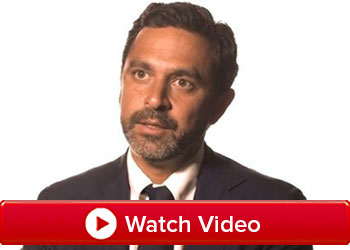- Who's a good candidate for ankle fusion surgery? (h3)
- Who's a good candidate for an ankle replacement?
What’s an ankle fusion?
Ankle fusion (also known as ankle arthrodesis) is a surgical option meant to relieve chronic pain and maintain the function of the ankle for patients who have end-stage ankle arthritis.
This procedure uses pins, screws, plates, and/or bone grafts to permanently fuse the ankle joint. Ankle fusion joins your shinbone to the top of your foot (talus), limiting movement, but relieving the pain of arthritic joints.
What’s an ankle replacement?
Total ankle replacement (also known as "total ankle arthroplasty" or "TAA") replaces your damaged ankle joint with an artificial joint. We surgically remove the damaged parts of the ankle and replace them with plastic or metal prosthetics.
Unlike ankle fusion, ankle replacement maintains (and can even improve) full functionality of the ankle joint.

Total ankle replacement vs. ankle fusion, which is better?
If you’re struggling with ankle pain or decreased function, how do you know which surgical procedure will offer the best outcome? It will depend on your lifestyle, level of pain, and the cause of your ankle dysfunction.
Our podiatrists will first evaluate your ankle with imaging, such as X-rays and MRIs, to visualize the damage to and quality of your ankle.
Taking all of this information into account, our ankle surgeons will recommend the best procedure for your case.
Who's a good candidate for ankle fusion surgery? (h3)
In general, UFAI reserves ankle fusions for patients who require a tremendous deal of strength and stability from their ankle without ankle pain. Heavy, active, diabetic, and younger patients are the best candidates for ankle fusions. And unlike an artificial ankle, you don’t have to worry about wear-and-tear breaking it down prematurely as replacements may not last more than 15 years.
Patients are still able to return to hiking, walking, cycling, and prolonged periods of standing without pain and without worrying about damaging the joint.
Ankle fusions are also preferred for patients with severe angular deformities of the ankle joint, which are usually not correctable with a TAA.
However, ankle fusion is not recommended for patients with poor bone quality or blood flow in the ankle or those with neuropathy (nerve damage) in the foot or ankle.
Who's a good candidate for an ankle replacement?
In general, total ankle replacement surgery is for patients over 60 who aren’t engaged in high-impact activities but still want to be active. Ankle replacement surgery can fully restore your natural range of motion and let you return to an active lifestyle. However, high-impact activities can wear down the ankle prosthesis, requiring revision surgery.
Ankle fusion can cause problems with your knees and hips as they compensate for your changed gait. Ankle replacement spares your knees and joints the extra strain.
However, ankle replacement is not recommended for patients with diabetes, bone infections, or blood flow problems.
The importance of picking the right ankle replacement surgeon
It’s important to choose a surgeon who is trained in both orthopedic surgery and podiatry, this guarantees a familiarity with the musculoskeletal system as well as foot and ankle function. At University Foot & Ankle Institute, our team is comprised of orthopedic surgeons, foot and ankle specialists, physical therapists, and sports medicine experts.
We also have state-of-the-art imaging technology in our clinics, cutting down time spent running around to different locations for imaging, diagnostics, and treatment. When choosing UFAI, you’re getting a complete treatment team, from conservative treatments to post-surgery physical therapy.
A UFAI Ankle Replacement Patient Says.
Albert injured his ankle playing volleyball in 1964. He tried braces and orthotics but nothing worked. Other doctors told him ankle fusion was his only option. Walking was important to him, so fusing his ankle wasn't something he wanted to do. He came to UFAI and doctors recommended an ankle replacement. He agreed and he’s currently recovering well and very pleased. Read Albert's review here.

I am so glad that we found UFAI.
I had lived with a painful and unstable ankle for over 50 years. An orthopedic doctor (specializing in foot and ankle issues) and podiatrists never offered this alternative. I was told I just had to continue to live with this unstable and painful ankle condition.
Thank you for the new ankle. The physical therapy group at the office is awesome as is the entire staff there. I look forward to the coming months when all the therapy and hard work pays off as far as getting all the ligaments working as they need to.
Ankle replacement options at UFAI
Once we’ve decided ankle replacement is the best option for you, the next step is selecting the procedure and implant. UFAI is one of the very few centers in the world to utilize all three of the leading ankle replacement options:
- The InBone Total Ankle Replacement system by Wright Medical
- The STAR Ankle (Scandinavian Total Ankle Replacement) by Stryker
- The Infinity Ankle Replacement system by Wright Medical
Each technology has slightly different characteristics, as well as advantages and disadvantages. Every ankle is unique, just like every patient, so we don’t have a one-size-fits-all treatment recommendation.
What is the recovery from ankle replacement surgery?
Total ankle replacement is usually performed as an inpatient procedure, meaning you’ll spend a night in the hospital. However, this procedure does have a rather long recovery time.
When you’re sent home, you’ll be in a splint, cast, or boot to immobilize the ankle while it heals. We’ll also send you home with prescription pain relief and medication to prevent blood clots. For the first two weeks, you should spend most of your time lying down with your ankle elevated to reduce swelling. You’ll also need crutches to move around and keep weight off your healing ankle.
For weeks three and four, you’ll be switched into a removable cast that you can take off to shower.
After four weeks, you’ll be able to resume some weight-bearing and start physical therapy. Physical therapy exercises will strengthen the muscles, tendons, and ligaments of your leg and ankle, supporting your new artificial joint.
Physical therapy will continue for months, improving your strength and flexibility. By four months, you should have more mobility and less pain than before surgery. At six months, you should be about 75% recovered. After a year, you should have full strength and mobility restored.
Your recovery will include frequent follow-ups with our doctors to monitor your healing.
UFAI, the Best Surgeons for Ankle Replacement Surgery
At the University Foot and Ankle Institute, we are proud to be at the forefront of ankle replacement surgery. Over the past 30 years, there has been an enormous amount of research and a greater understanding of the biomechanical complexities of the ankle joint. This has led to vastly improved devices, materials, and implant placement guidelines. As a result, there have been dramatic improvements in the quality and longevity of total ankle replacements.
Ankle replacement technology aside, there's nothing that replaces a surgeon’s experience in making sure the right choice is made. University Foot and Ankle Institute’s combined decades of experience assure you that the decision you make with our doctor will be the best one just for you.
We also offer orthotic and brace manufacturing as well as on-site physical therapy services and state-of-the-art operating rooms. This means you will rarely have to go from one specialist to the next, cutting down on your travel needs and wasted time.
If you’re suffering from ankle problems and are unsure of all your alternatives, please contact us today to schedule a consultation.
For a consultation, please call (877) 736-6001 or make an appointment online now.
University Foot and Ankle Institute is conveniently located throughout Southern California and the Los Angeles area. Our foot and ankle surgeons are available at locations in or near Santa Monica, Beverly Hills, West Los Angeles, Sherman Oaks, the San Fernando Valley, El Segundo, the South Bay, LAX, Calabasas, Agoura Hills, Westlake Village, Valencia, Santa Clarita, and Santa Barbara.